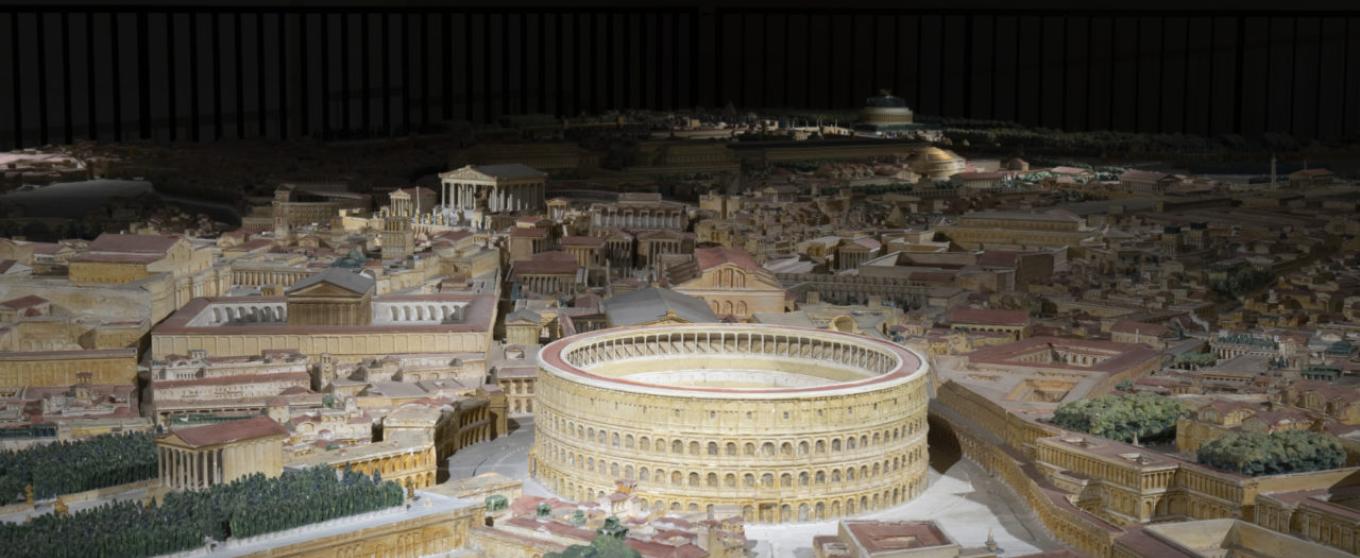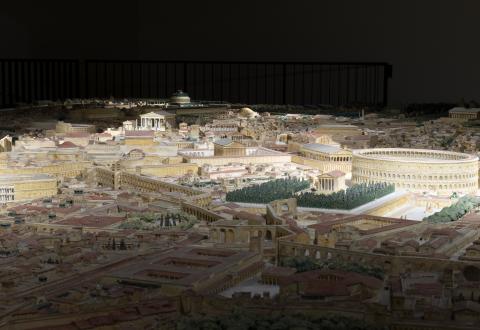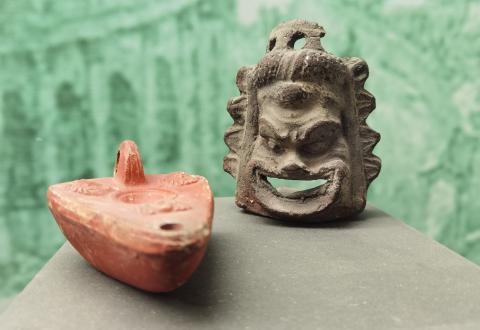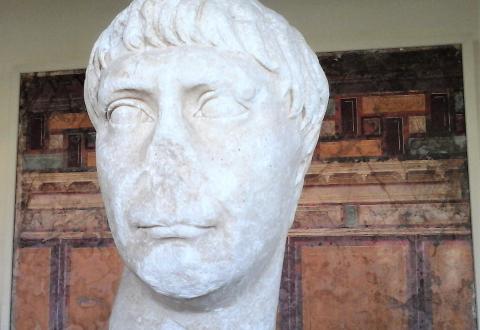
Rome
The colonnade of Apamea rises majestically, marking your entry into the Roman collection. At the center of the gallery, the monumental statue of Emperor Septimius Severus overlooks the colorful mosaics. The core of the collection comes from the archaeological finds of the Belgian mission in Apamea on the Orontes in what is now Syria. In the portrait gallery, other prominent Romans await your attention. Take a moment to admire the nudes in white marble, inspired by Greek art. And don’t miss the model of Rome, one of the museum’s crown jewels.
Apamea
In addition to the spectacular reconstruction of the central section of the great colonnade that once stretched across the city from north to south, the gallery also presents a remarkable selection of mosaics, shedding light on the many facets of this art form during the fourth and fifth centuries.

Model of Rome
The model depicts Rome at the end of the 4th century, at the height of its splendour. It was created by the French architect Paul Bigot, who devoted most of his life to making scale models of the capital of the Roman Empire, producing four in total. Today, only his working model (at the University of Caen) and the model in Brussels survive. The version at the Art & History Museum is the only one to be coloured. A true masterpiece and a must-see for every school visit, the model measures 11 × 4 metres at a scale of 1:400.
More info
The Daily life
On the lower floor, a selection of works illustrates how the collection has grown over the years. Additional objects offer a fascinating glimpse into daily life in ancient times.

Figures
The collection also features numerous idealized marble figures, Roman copies, and imitations of famous Greek originals. Depictions of gods, heroes, and other mythological beings reflect Roman collections dating back to the Renaissance. In the portrait gallery, visitors encounter Romans from across the empire over a span of more than 500 years, with the rare, monumental bronze figure of Emperor Septimius Severus as the star attraction.

Contact
- Natacha Massar: n.massar@kmkg-mrah.be